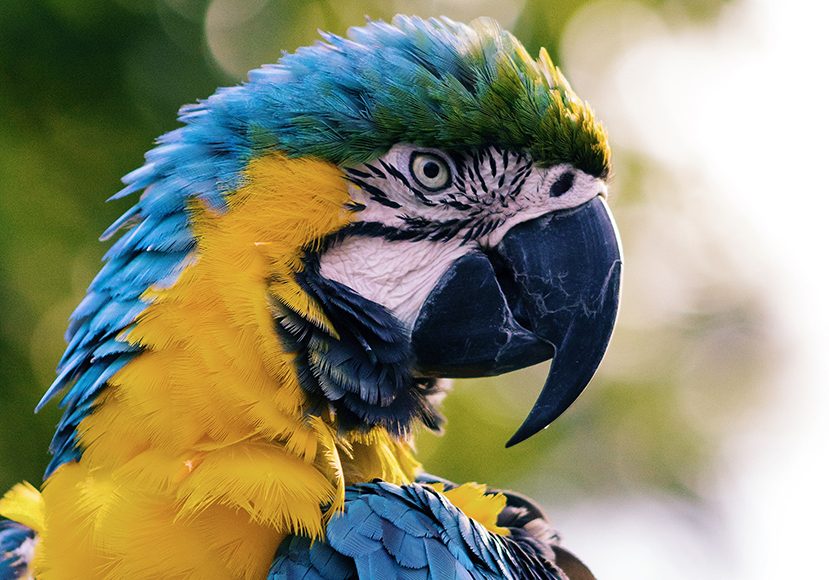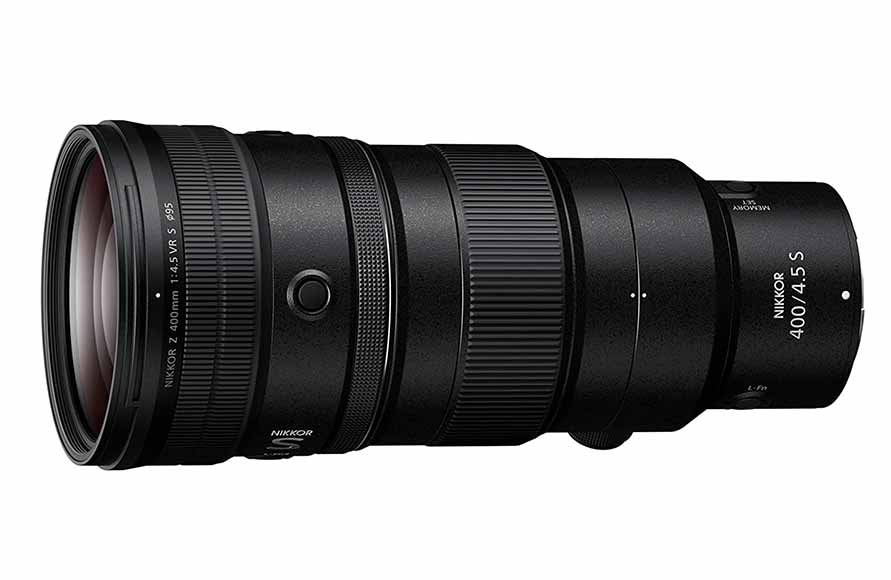
Best Lenses for Bird Photography in 2023 (Birding)
Do you really need to fork out thousands for the longest, most exotic telephoto lenses for bird photography? Well, yes and no. Here's what you need to know.
This guide to the best lenses for bird photography will help you capture stunning avian moments with precision and clarity.
If you’re like me, you’re all about capturing those incredible birding moments with jaw-dropping clarity.
As a fellow bird photography fanatic, I totally get how important it is to have the right gear to make those feathery subjects pop.
If you’ve already for the best camera for bird photography, in this article, you’ll discover top lenses that will take your bird photography skills to the next level.
You’ll be able to snap bird shots with mind-blowing detail, vibrant colors, and eye-splitting clarity.
Whether you’re a beginner or a seasoned bird photographer looking to level up, I’ve got your back.
So, get ready to dive into the exciting world of bird photography and discover the lenses that’ll have your images soaring high.
This guide will give you all the juicy insights and recommendations you need to make smart lens choices for your next birding adventure.
Let’s dive right into my top lens picks.
Table of Contents
Best Lenses for Bird Photography (by Camera Brand)
Best Nikon Lenses for Bird Photography

The Nikon NIKKOR Z 400mm f 4.5 VR S is a great choice for bird photographers looking for a prime lens
There is a large selection of native lenses for Nikon cameras suitable for all types of wildlife photography and budgets.
A great lens for bird photography that won’t break the bank is the NIKON NIKKOR Z 24-200mm f/4-6.3 compact telephoto zoom lens.
It’s one of Nikon’s most affordable zoom lenses, featuring image stabilization and a focal length range that makes it suitable for landscapes as well as close-ups of relatively nearby birds.
By contrast, the wider maximum aperture of the NIKON NIKKOR Z 70-200mm f/2.8 S telephoto zoom lens delivers a superior level of sharpness and detail.
It’s a fast and responsive telephoto zoom lens that is equally at home with videography as it is with photography, featuring impressive aberration suppression and optical quality.
The close focusing distance of just 0.5m means you’ll capture excellent results should you be fortunate enough to get close to your avian subject.
For bird photography requiring a much longer focal length, the Nikon 200-500mm f/5.6E ED VR AF-S NIKKOR zoom lens can be picked up refurbished for a little extra money.
The extra reach makes this one of Nikon’s more comprehensive telephoto lenses for capturing smaller birds at a distance or getting sharp, clear face close-ups. NIKKOR Z 400mm f/4.5 VR S
If you prefer shooting with prime lenses, Nikon’s NIKKOR Z 400mm f/4.5 VR S produces wonderfully smooth bokeh in a surprisingly lightweight and compact prime lens.
Suitable for a smaller camera body, its fixed focal length, silent autofocus, and compact lens hood make it a solid go-to Nikon lens for on-the-go handheld shooting.
Last but by no means least is the Nikon AF-S FX NIKKOR 600mm f/4E FL ED, a premium-level lens geared towards professionals and hardcore hobbyists with a large budget.
Such a lens is designed for Nikon’s high-end full-frame cameras, delivering a stunning degree of accuracy thanks to its ~4.0 stops vibration reduction for when tracking birds handheld.
It comes with a raft of accessories ranging from filters and cases to a handy monopod collar and is a truly excellent lens for serious wildlife photographers.
Best Canon Lenses for Bird Photography

Canon’s flagship EF 800mm f 5.6L is USM is a premium birding lens for those who can afford it
Like Nikon, Canon offers a broad selection of birding lenses, from high-end super telephoto lenses to ones with a fixed aperture more suitable for low light conditions.
A recommended entry-level lens for casual photographers is the Canon EF 70-300mm f/4-5.6 IS USM lens, designed for their EOS SLR cameras.
Suitable for those on a tight budget using older cameras, this Canon lens delivers a versatile focal length range at a fraction of the price of the
The Canon RF100-400mm F5.6-8 IS USM is another compact telephoto lens with a versatile zoom range with a travel-friendly size and weight for everyday use.
Its Nano USM focusing performance is barely audible, and it’s easy to get crisp and sharp images with or without the image stabilization engaged.
The price also makes this a compelling choice of birding lens, as it’s rare to find a telephoto zoom lens that goes above 300mm that isn’t considerably more expensive.
If you want a super telephoto lens that delivers considerably higher image quality, there’s the Canon EF 100-400mm f/4.5-5.6L IS II USM lens, which comes with a circular polarizer.
Build and optical quality here is exemplary, and this highly-anticipated lens for bird photography offers an ideal focal length for bird and other wildlife photography.
Bird photographers using an APS-C camera will benefit from an effective focal length similar to a full-frame 160-640mm camera lens for capturing distant and smaller bird species.
Canon’s RF100-500mm F4.5-7.1 L IS USM super telephoto zoom lens takes the overall performance up a notch, with faster autofocus speed and a longer maximum focal length.
The lens is fully weather sealed and constructed from durable materials and comes with three optical image stabilization modes for a range of shooting conditions.
For professionals, there’s the high-priced Canon EF 800mm f/5.6L is USM super telephoto lens, the longest telephoto lens in Canon’s complete line-up.
This incredibly powerful long telephoto lens might cost as much as a small car, but it’s widely considered to be among the very best lenses for bird photography out there.
Outstanding image stabilization allows for handheld shooting at a shutter speed as low as 1/160 second, and throwing on a Canon EF 1.4 Extender will turn it into an 840mm lens.
Best Sony Lenses for Bird Photography

Sony users looking for a fixed aperture should consider the FE 70-200mm F2.8 GM OSS II
Casual photographers invested in Sony’s APC-C cameras will find plenty to love about the Sony Alpha 70-350mm F4.5-6.3 G OSS Super-Telephoto APS-C lens.
It’s an affordable telephoto lens with plenty of scope for everyday photography and an optimized design that combines image stabilization and precise autofocus.
For a wider aperture delivering exceptionally smooth bokeh and low light performance, there’s the Sony FE 70-200mm F2.8 GM OSS II full-frame super-telephoto zoom.
One of Sony’s flagship G Master lenses, this delivers superior optics through its constant aperture and impressive autofocus for capturing birds in motion.
Coming in at around the same price point is the Sony FE 200-600mm F5.6-6.3 G OSS super-telephoto zoom lens, sacrificing the maximum aperture in favor of additional focal reach.
Another super telephoto lens in Sony’s G Master range, it’s built for professionals, delivering bespoke interactions through its programmable focus hold button for rapid adjustments.
The inclusion of an adjustable torque ring for tweaking manual zoom controls to suit your shooting style further confirms this as a premium lens for bird photography.
Sony’s FE 200-600mm F5.6-6.3 G OSS super telephoto zoom lens offers outstanding reach for wildlife and bird photography, no matter how near or far the subject is.
Using a 1.4x teleconverter, this focal range extends to an impressive 280-840mm, while a 2.0x converter gives you a zoom and aperture range of 400-1200mm and f/11-13.
Thanks to the internal zoom system, combined with weather sealing, it’s ideal for balanced and stable shooting of faraway subjects while being resistant to moisture and dust.
Lastly, if money is no object, the Sony FE 600mm F4 GM super telephoto prime lens offers the world’s lightest model at this focal length, as well as one of the fastest.
For the price tag, you get a camera lens capable of producing shots no other lens can achieve, with tack-sharp picture quality, light enough to shoot handheld.
Best Fujifilm Lenses for Bird Photography

The Fujifilm XF55-200mmF3.5-4.8 R LM OIS is a great choice for budget-conscious wildlife photographers
While Fujifilm lacks the industry clout of the likes of Canon and Nikon, they nevertheless offer a range of great lenses suitable for crisp and vibrant bird photography.
Both the Fujifilm XF55-200mm F3.5-4.8 R LM OIS and the FUJIFILM Fujinon XF70-300mm F4-5.6 R LM OIS lenses offer great image quality on a moderate budget.
The former sacrifices zoom range in favor of a better aperture range, with the latter giving you additional reach when you can’t get a little closer to your subject.
Both include an optical image stabilizer for solid performance handheld and in low light situations and are ideal for casual users who want to use a lens in general situations.
The constant aperture of the Fujifilm XF50-140mm F2.8 R LM OIS WR allows for stronger performance and top-class bokeh, albeit with a shorter overall focal range.
Utilizing fast autofocus and more glass elements than its cheaper alternatives, it’s a lens that bridges the gap between enthusiastic hobbyists and professional photographers.
Slightly more expensive but delivering considerably more versatile focal length is the Fujifilm XF100-400mmF4.5-5.6 R LM OIS WR, a powerful super-telephoto lens.
Featuring 5.0-stop* image stabilization and protective fluorine coating for bird photography in adverse weather, it’s a serious lens capable of producing beautifully sharp images from edge to edge.
It’s a lens that delivers a truly tactile and pleasurable shooting experience, with responsive rings for aperture, focus, zoom, and rapid autofocus.
The Fujinon XF150-600mm F5.6-8 R LM OIS WR lens offers the longest focal length of all the Fujifilm lenses and, as such, represents the best value in terms of creative options.
It’s lighter than you might expect, considering its specifications, with the inner zoom construction making handheld shooting much easier to deliver consistent results.
What Focal Length Lens Do I Need to Photograph Birds?
I made this table to show some general guidelines on what lenses you should use to photograph certain species of birds.
Remember that the suitability of each lens will also depend on other factors such as the bird’s behavior, habitat, and your own shooting style
| Focal Length | Suitable Birds | Reasoning |
|---|---|---|
| 200mm | Larger birds such as waterfowl, herons, and birds in flight at closer distances | A 200mm lens provides a moderate telephoto reach, allowing you to capture larger birds with good detail and is suitable for birds in closer proximity. |
| 300mm | Medium-sized birds like hawks, owls, and songbirds at moderate distances | With a 300mm lens, you can capture medium-sized birds with more detail, making it versatile for various bird species and distances. |
| 400mm | Birds of prey, shorebirds, and larger songbirds at a distance | A 400mm lens offers a substantial telephoto reach, allowing you to capture birds at a distance with excellent detail, ideal for birds that may be challenging to approach. |
| 600mm | Smaller birds, raptors, and birds in flight at a considerable distance | A 600mm lens provides an extensive telephoto reach, enabling you to capture smaller birds with incredible detail and birds in flight even when they are far away. |
| 800mm | Elusive and small bird species, birds in flight, and birds at extreme distances | An 800mm lens offers an exceptional telephoto reach, allowing you to capture elusive and small bird species with unmatched detail, as well as birds in flight from afar. |
10 Tips for Sharper Images of Birds (Even When Using Budget Lenses)
Getting sharper images of birds doesn’t require any of the best lenses for bird photography I mention above.
In fact, it’s achievable with a few key techniques, even when you’re using budget lenses or even the kit lens that comes with your camera.
Here are some tips to help you out:
- Pay attention to your camera stability: Use a tripod or monopod to minimize camera shake and ensure sharper images. Additionally, practice proper hand-holding techniques by supporting the lens and body to reduce vibrations. You should also consider using a spotting scope tripod too.
- Select a fast shutter speed: Birds are usually flying (not static), so using a faster shutter speed helps freeze their movement and reduces the chances of motion blur. Aim for a minimum shutter speed of 1/1000th of a second or faster, depending on the bird’s activity level.
- Learn how to effectively use your camera’s autofocus system: Experiment with different autofocus modes and focus points to track the bird accurately. Continuous autofocus (AI Servo for Canon or AF-C for Nikon) can help maintain focus on moving birds.
- Adequate lighting is crucial for sharp images: Shoot during the golden hours (early morning or late afternoon) when the light is softer and more flattering. Avoid harsh midday sunlight, which can lead to strong shadows and high contrast.
- Use proper lens technique: When shooting handheld, tuck your elbows in and maintain a stable posture. Press the viewfinder against your eye to provide additional stability. When using longer focal lengths, be mindful of lens stability and consider using a lens collar or tripod mount.
- Utilize image editing software to enhance sharpness during post-processing: Apply selective sharpening techniques to the bird itself while avoiding oversharpening the background or introducing artifacts.
- If possible, try to get closer to the bird: This reduces the distance between the lens and the subject, resulting in sharper images due to less atmospheric distortion and better detail capture.
- Find the lens’s sweet spot: Every lens has an aperture at which it performs its best in terms of sharpness. Experiment with different apertures and test your lens to find its sweet spot, usually around mid-range apertures like f/8 or f/11. Avoid using the widest or smallest apertures where the lens may exhibit softness or reduced sharpness.
- Mind your focusing distance: Cheap or kit lenses often struggle with close focusing distances. Keep in mind the minimum focusing distance of your lens and avoid trying to focus too closely on small bird subjects. Instead, focus on capturing birds from a reasonable distance to maintain sharpness.
- Be mindful of lens limitations: Lower-cost lenses may have limitations such as higher levels of chromatic aberration, vignetting, or distortion. Be aware of these limitations and try to mitigate them during post-processing. Lens correction tools in image editing software can help correct some of these issues.
One final bonus tip – ever since I tried using a high-megapixel camera (the Sony a7RIII), I realised that having long (and expensive!) zoom lenses for bird photography isn’t entirely necessary.
You see, by cropping into the photo, I could still get ‘closer’ to whatever bird I was photographing.
Using a high-megapixel camera, or some kind of image upscaling software like Topaz Photo AI, will allow you to crop heavily into your photos, mimicking the zoomed effect of a telephoto lens.
You won’t get the same ‘blurred background’ effect that shooting with the best lens for bird photography might give you, but you’ll still be able to have a more zoomed-in look at the bird you’re trying to capture.
FAQs on Bird Photography Lens Selection
- Is a 400mm lens enough for bird photography?
A 400mm lens can certainly be sufficient for bird photography, especially when combined with a teleconverter to extend the reach. It allows you to capture birds from a moderate distance and obtain decent detail, making it a popular choice for birders on a budget or those who prefer more versatile focal lengths.
- Is a 70-200mm lens good for bird photography?
While a 70-200mm lens may not provide the extreme telephoto reach typically preferred in bird photography, it can still be useful in certain situations. It’s great for capturing birds in closer proximity or when you want to include more of the environment in your shots. However, for smaller or more distant birds, a longer lens would be more suitable.
- Is 600mm enough for bird photography?
A 600mm lens is considered a fantastic option for bird photography, offering an impressive reach that allows you to capture birds in great detail even from a distance. It’s a popular choice among bird photographers who want to get up close to their subjects without disturbing them and is well-suited for various birding scenarios.
- Is 800mm enough for bird photography?
An 800mm lens is considered a top-of-the-line choice for bird photography, providing an exceptional amount of telephoto reach. With this lens, you can capture birds with incredible detail, even when they are quite far away. It’s ideal for professional bird photographers or enthusiasts who frequently encounter distant or elusive bird species.
- What is the best lens for Eagle photography?
When it comes to eagle photography, a telephoto lens with a focal length of 400mm or more is highly recommended. Lenses like the Canon EF 400mm f/2.8L IS III or the Nikon AF-S NIKKOR 600mm f/4E FL ED VR are popular choices, as they offer the necessary reach and image quality to capture eagles in their majestic flight or perched positions.
- What is the best aperture for bird photography?
In bird photography, the best aperture varies depending on the desired effect and the specific lighting conditions. As a general guideline, using a medium aperture like f/8 to f/11 can provide a good balance between depth of field and sharpness, ensuring that the bird remains in focus while still maintaining some background blur. However, it’s essential to adapt the aperture based on the specific bird and the composition you want to achieve in each shot.















